Abstract
In the present study the participation was evaluated of isolated fractions of Nocardia brasiliensis in the genesis of the inflammatory response observed in actinomycotic mycetoma. Subcutaneous injection in mice of a suspension containing a polysaccharide fraction F1 obtained by treating cell walls with sodium hydroxide induced an inflammatory response at the inoculation site which was characterized by a large influx of polymorphonuclear (PMN) and mononuclear (MN) leucocytes between the 2nd and 4th days. On the 8th day, a typical granulomatous reaction was observed involving large numbers of epithelioid cells. Intravenous injection of the lipid extract adsorbed to charcoal particles into mice induced an inflammatory reaction around the particles embolized in the pulmonary microcirculation which was similar to that described above. The kinetics of the inflammatory cell migration was studied by total and differential counts of leukocytes that migrated to the peritoneal cavity of rats inoculated intraperitoneally with the F1 and lipid fractions. Both fractions initially induced intense PMN migration, which was later reduced, with a simultaneous increase in mononuclear cells. The present results demonstrate that a polysaccharide fraction (F1) and the lipid fraction reproduce the fundamental lesion of actinomycotic mycetoma.
Full text
PDF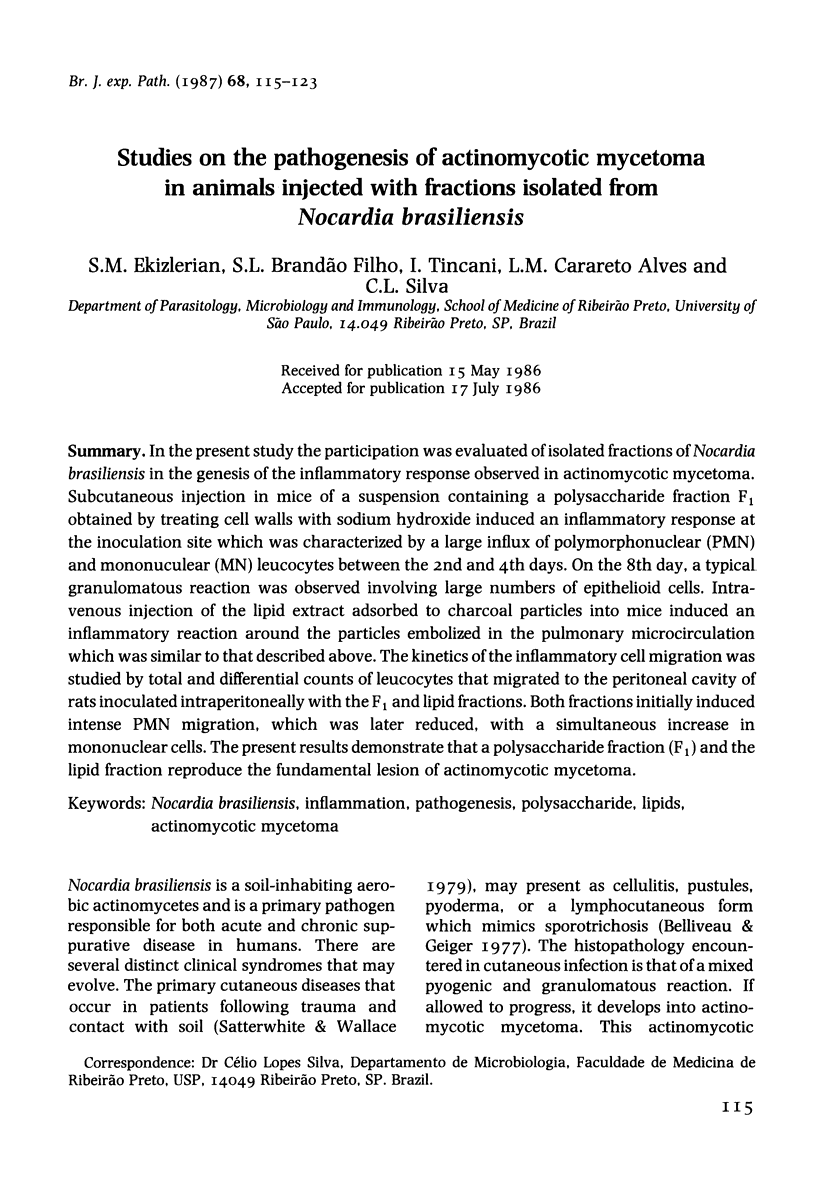
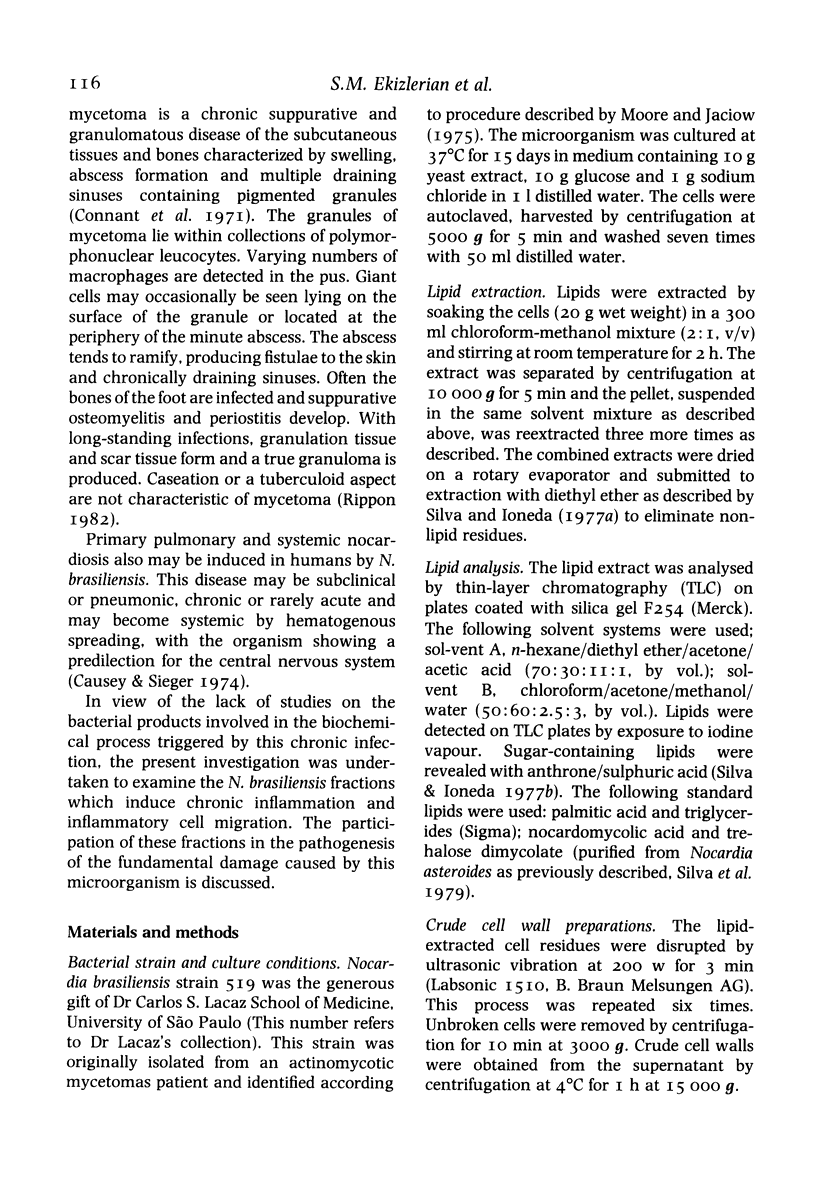
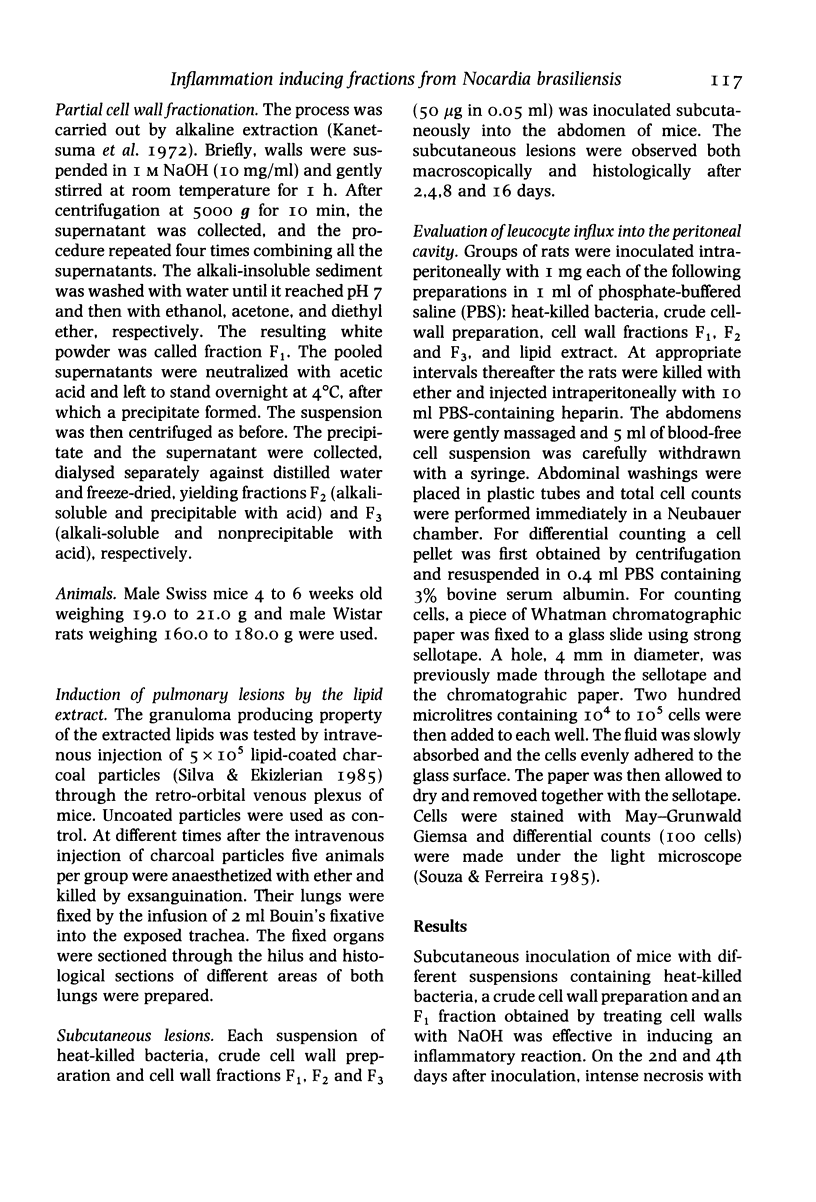
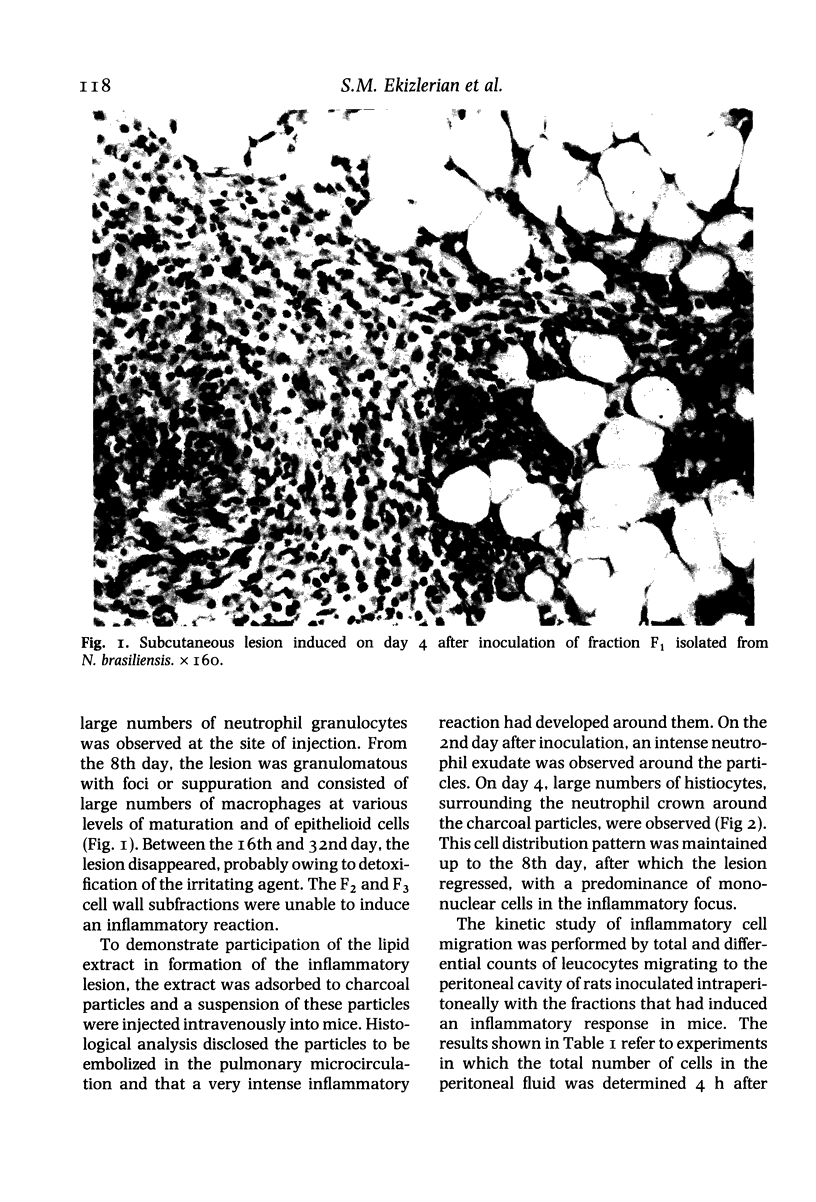
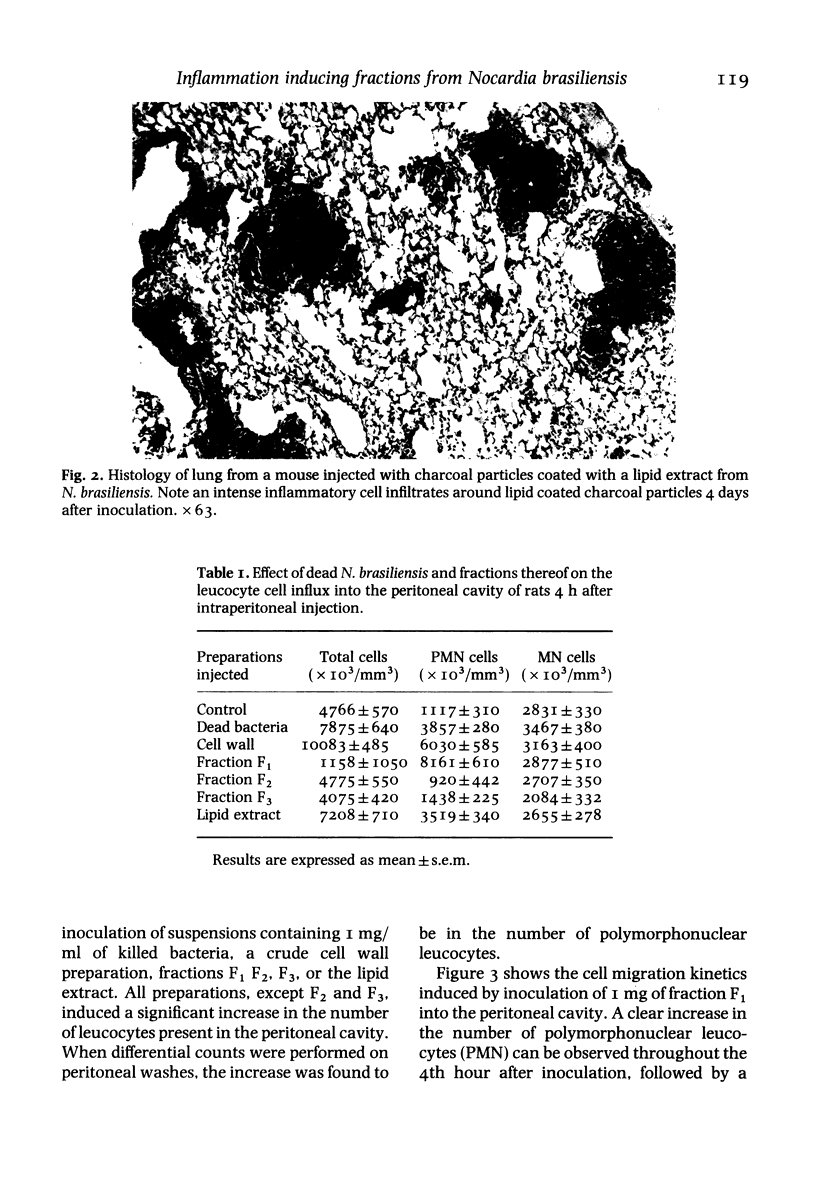
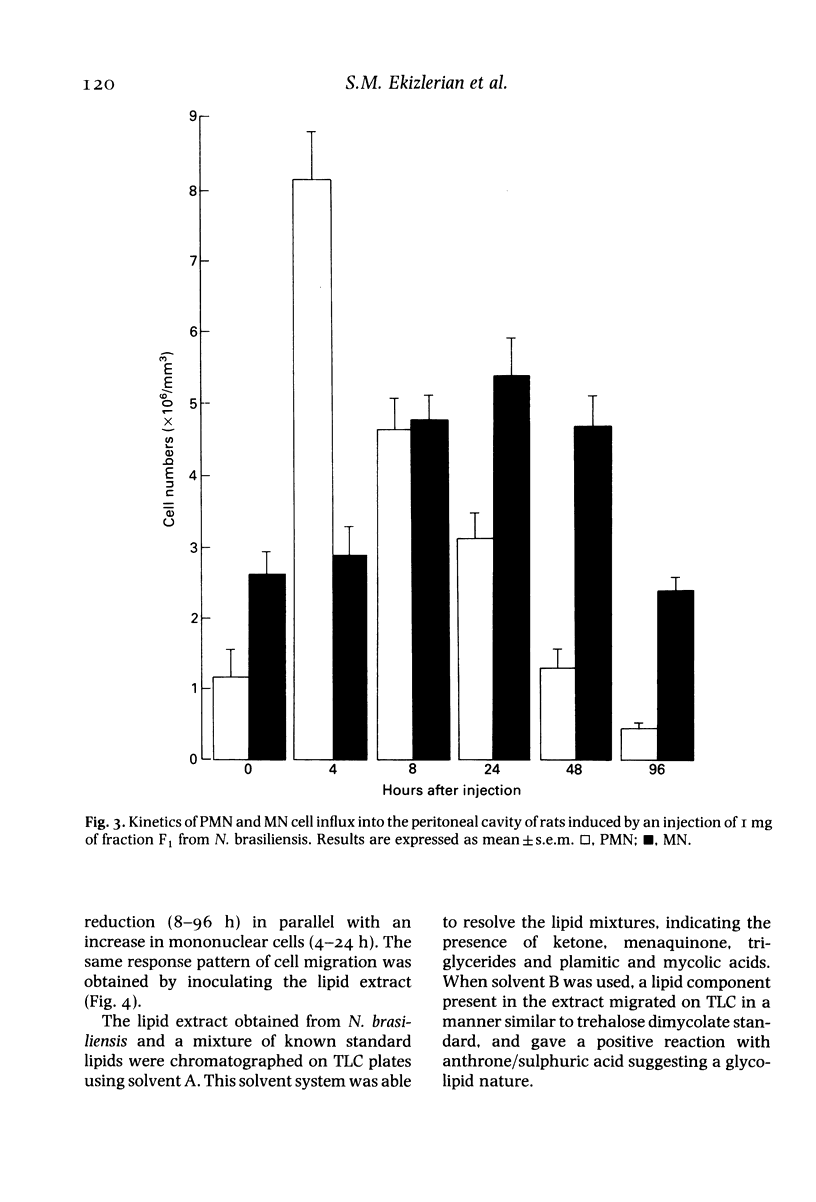
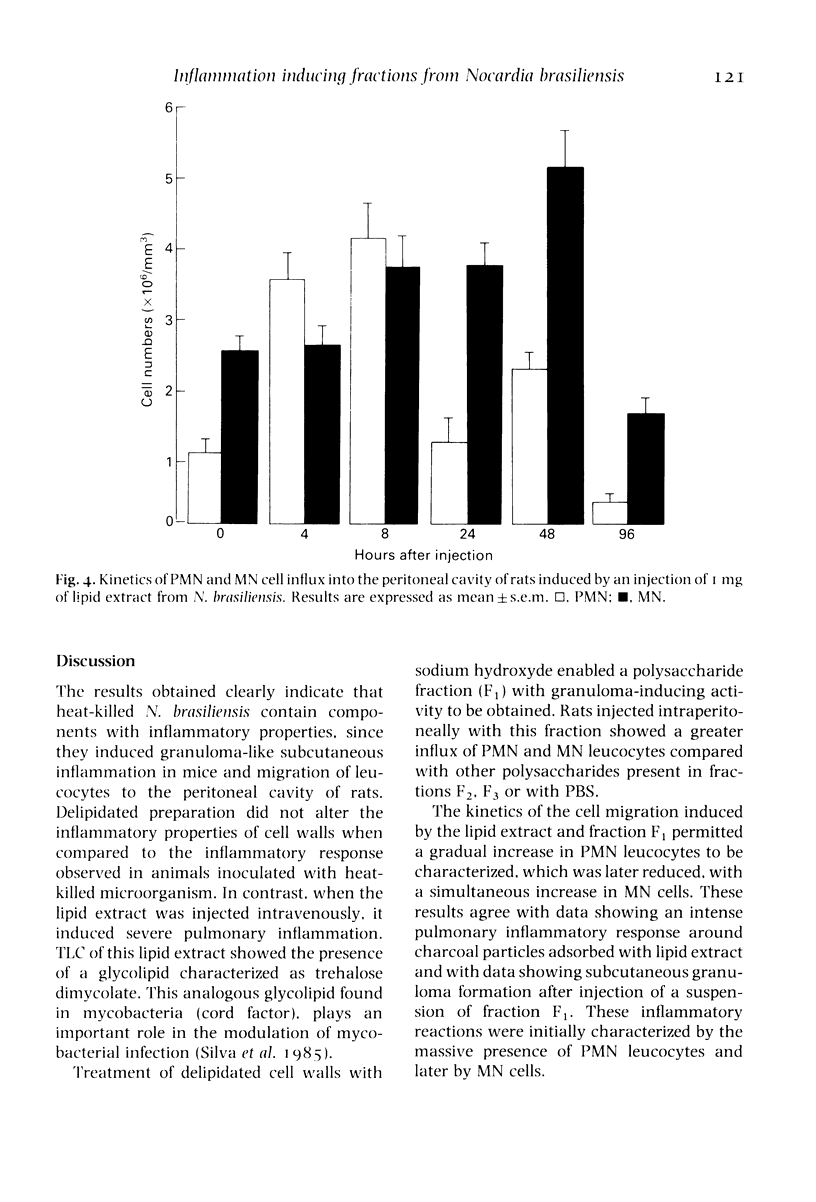
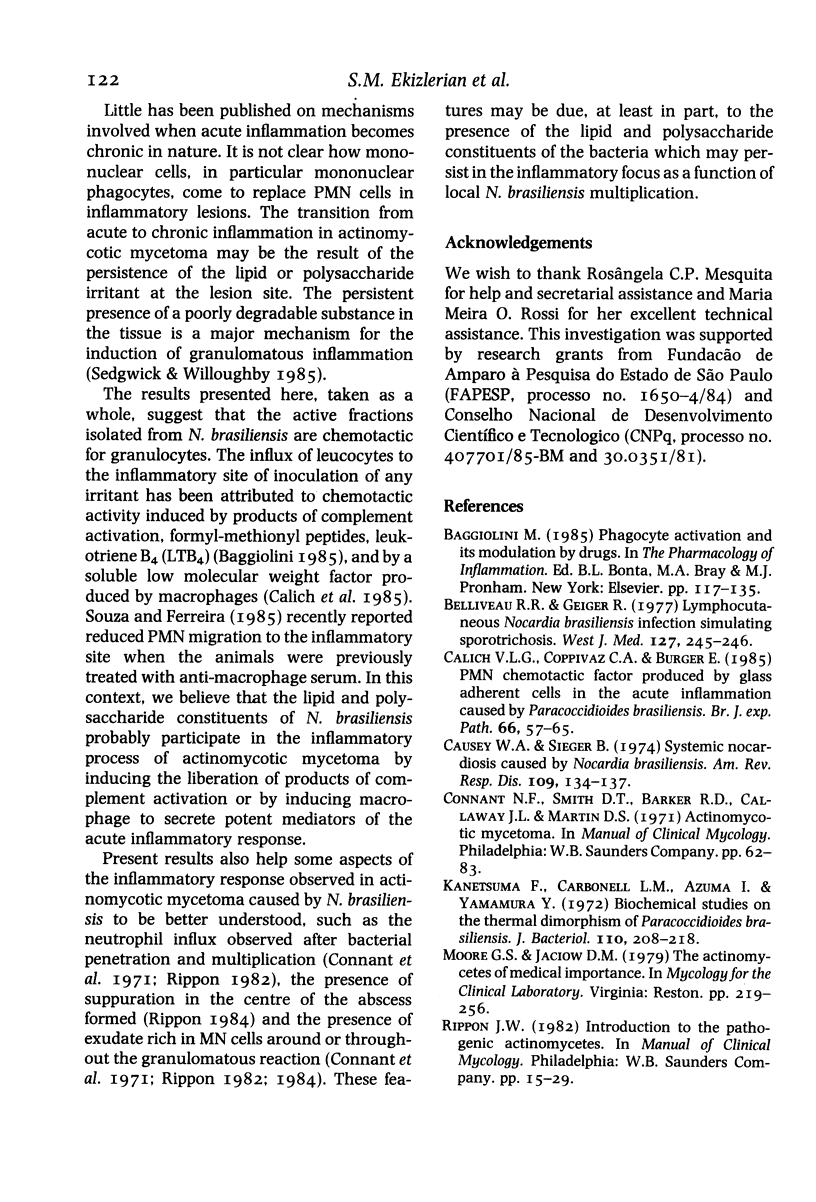
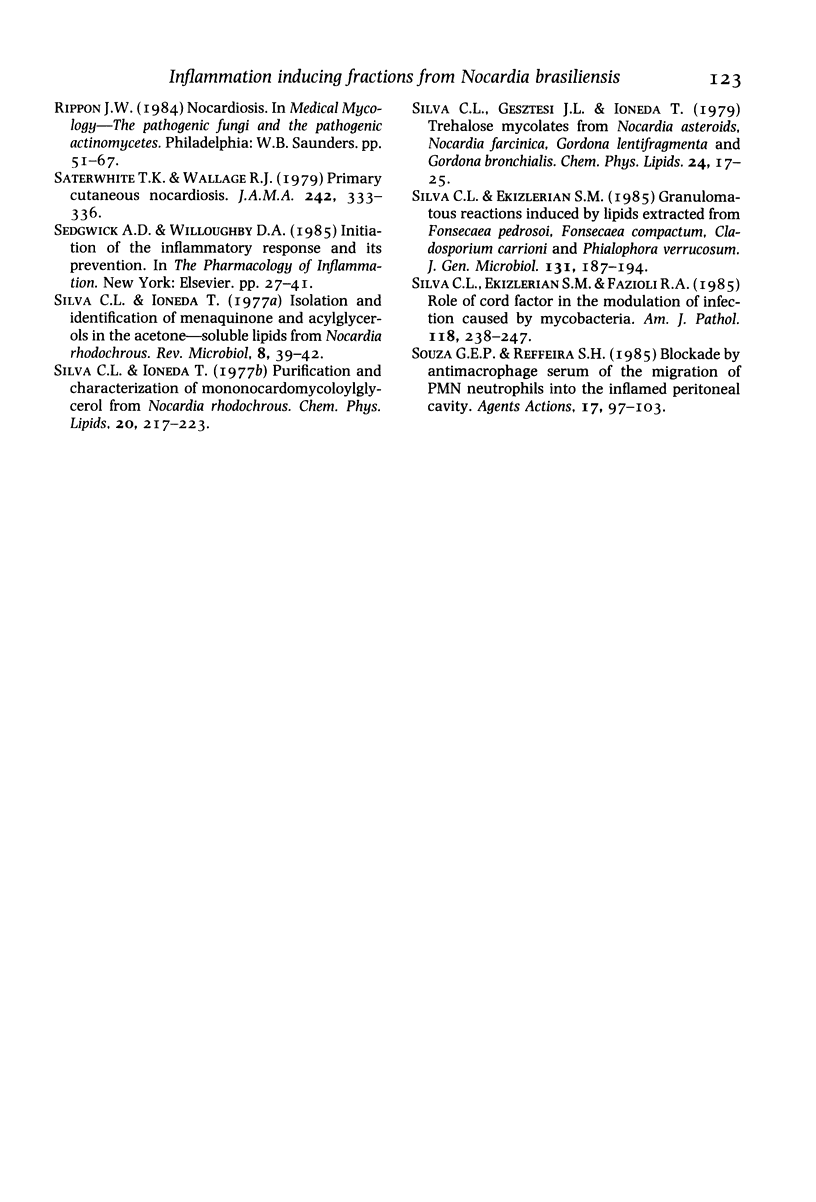
Images in this article
Selected References
These references are in PubMed. This may not be the complete list of references from this article.
- Belliveau R. R., Geiger F. Lymphocutaneous nocardia Brasiliensis infection simulating sporotrichosis. West J Med. 1977 Sep;127(3):245–246. [PMC free article] [PubMed] [Google Scholar]
- Calich V. L., Coppi Vaz C. A., Burger E. PMN chemotactic factor produced by glass-adherent cells in the acute inflammation caused by Paracoccidioides brasiliensis. Br J Exp Pathol. 1985 Feb;66(1):57–65. [PMC free article] [PubMed] [Google Scholar]
- Causey W. A., Sieger B. Systemic nocardiosis caused by Nocardia brasiliensis. Am Rev Respir Dis. 1974 Jan;109(1):134–137. doi: 10.1164/arrd.1974.109.1.134. [DOI] [PubMed] [Google Scholar]
- Kanetsuna F., Carbonell L. M., Azuma I., Yamamura Y. Biochemical studies on the thermal dimorphism of Paracoccidioides brasiliensis. J Bacteriol. 1972 Apr;110(1):208–218. doi: 10.1128/jb.110.1.208-218.1972. [DOI] [PMC free article] [PubMed] [Google Scholar]




